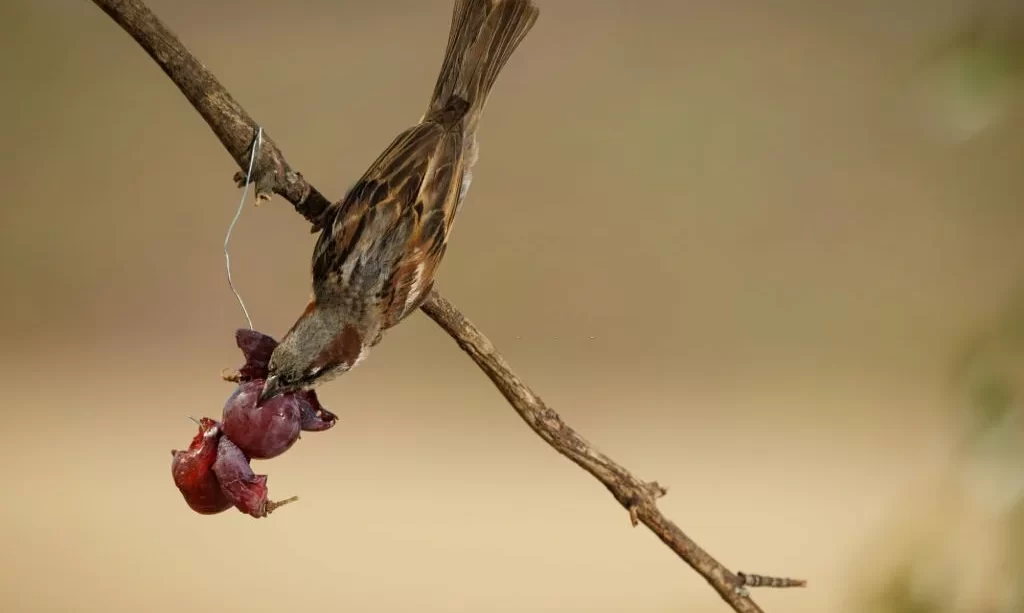Grapes, with their sweet and succulent nature, have long been cherished by humans as a delicious snack, a culinary delight, and a key ingredient in the world of winemaking. But have you ever wondered what animals think of this delectable fruit? In this article, we’ll delve into the intriguing world of grape-loving creatures and answer the question, “What Animals Eat Grapes”? While grapes are a common treat for people, they also play a role in the diets of various members of the animal kingdom. Let’s unravel this juicy mystery and explore the diverse wildlife that enjoys grapes.
Fruit-Eating Animals
Before we get into the specifics of which animals enjoy grapes, it’s essential to understand that grapes are fruits, and as such, they are part of the diet of many fruit-eating animals. These animals, often referred to as frugivores, play a significant ecological role by aiding in the dispersal of seeds. As they consume fruits, they often spread seeds to new locations, contributing to the growth of plants and trees in different areas. This is an important ecological service, and grapes are no exception when it comes to attracting these fruit-loving creatures.
Birds
Among the diverse range of animals that enjoy grapes, birds are noteworthy grape enthusiasts. Many bird species are attracted to the sweet taste and nutritional value of grapes. Common garden visitors like sparrows and robins may nibble on grapes if given the opportunity. Larger birds, such as crows and starlings, are also known to enjoy these fruity treats. Even some tropical birds, like parrots, have been observed indulging in the occasional grape feast. For birds, grapes provide a quick energy source and a refreshing, hydrating snack. Their visits to grapevines can sometimes be a delightful sight for birdwatchers and grape enthusiasts alike. So, birds certainly have a sweet spot for grapes in their diet.
Mammals
In addition to birds, mammals are another group of animals that may find grapes hard to resist. While not all mammals consume grapes, some are known to enjoy them as a sweet and juicy treat. One of the most common grape-loving mammals is the raccoon. Raccoons are opportunistic feeders and can be quite resourceful in seeking out and enjoying grapes. Additionally, some larger mammals like deer and squirrels have been known to nibble on grapes when given the chance. It’s essential to note that grapes should only be fed to mammals in moderation, as excess consumption can be harmful to their health. Nonetheless, grapes hold an appeal for some mammals, making them an occasional part of their diet.
Insects and Arthropods
While grapes are typically consumed by larger animals, they also attract smaller creatures, particularly insects and arthropods. The sweet aroma and sugary juice of ripe grapes make them a desirable food source for a range of insects, including bees, wasps, and fruit flies. Unfortunately, this attraction to grapes can sometimes lead to issues in vineyards, as these insects can become pests. In such cases, grape growers often employ various measures to protect their crop. The relationship between grapes and insects is a reminder of the complexity of ecosystems and the role of fruit in supporting diverse communities of wildlife.
Ethical Considerations
Offering grapes to wildlife can be a double-edged sword. While it might be tempting to share this tasty fruit with animals, it’s essential to do so responsibly. Feeding grapes to wildlife should be carried out with caution, as excessive consumption can harm some animals, particularly dogs, and certain wildlife species. Grapes can be toxic to dogs and cause kidney damage, so it’s crucial to keep grapes out of their reach. When feeding grapes to wildlife, ensure that it’s done in moderation and does not disrupt their natural diet. Ethical considerations in feeding animals are vital to maintaining their well-being and preserving the balance of local ecosystems.
Conclusion
In conclusion, grapes are a delightful treat for a range of animals, from birds to mammals, and even smaller creatures like insects. While grapes can be a sweet and nutritious addition to their diets, it’s essential to offer them responsibly and in moderation. Understanding the dietary preferences of wildlife helps us appreciate the diverse roles these animals play in ecosystems. As you enjoy grapes, consider the wildlife that might share your appreciation for this juicy fruit. By striking a balance between our love for grapes and the well-being of the animals that enjoy them, we can coexist harmoniously with the creatures that make our natural world so vibrant and fascinating.




